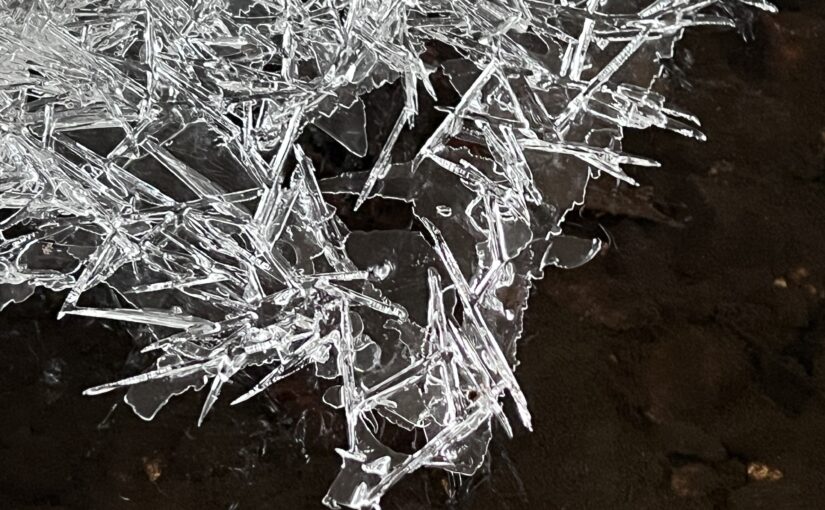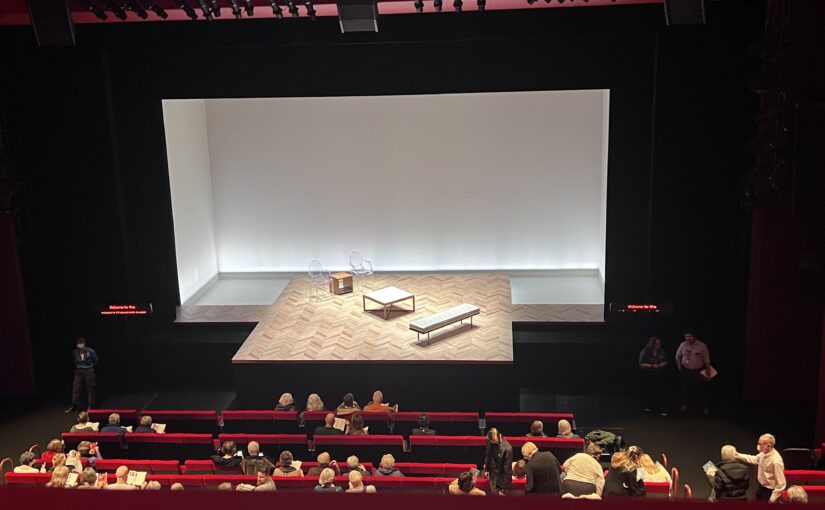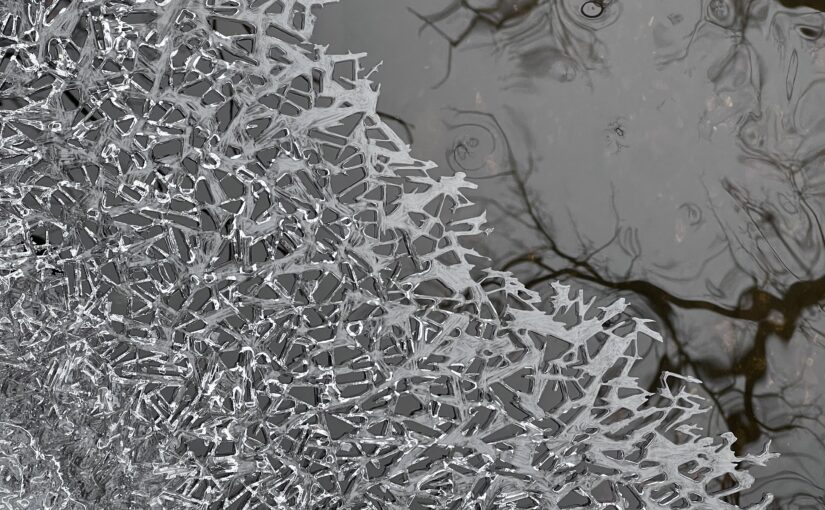5 January 2024
We’ve had a remarkably long fall. Although we’ve had some chilly periods, the temperatures are still tending to edge above freezing during the day, and in the last month we’ve had days that make it into the forties, and even the fifties. We’ve had two light snows: one but a dusting, and the second perhaps an inch, enough to almost bury the downed leaves. So the world is mostly gray and brown: the dully gray winter sky arches overhead, and the grass, trees, and carpet of leaves is brown brown brown. Very dull.
I have been waiting, with anticipation, for the first ice crystals to form on Minihaha creek, where I do most of my runs. I enjoy looking at ice on the creek as the winter progresses. First, most of the water is open, and a crystalline fringe forms along the edges of still portions of the creek. Next, the fringes grow, meeting in a delicate and parlous surface in the middle. As the cold deepens, the ice thickens. In the early part of the winter the ice tends to be crystal clear — although depending on the way in which the crystals form the may make portions of the surface matte white.
Continue reading First Ice Crystals on Minihaha Creek, 2024Views: 4


